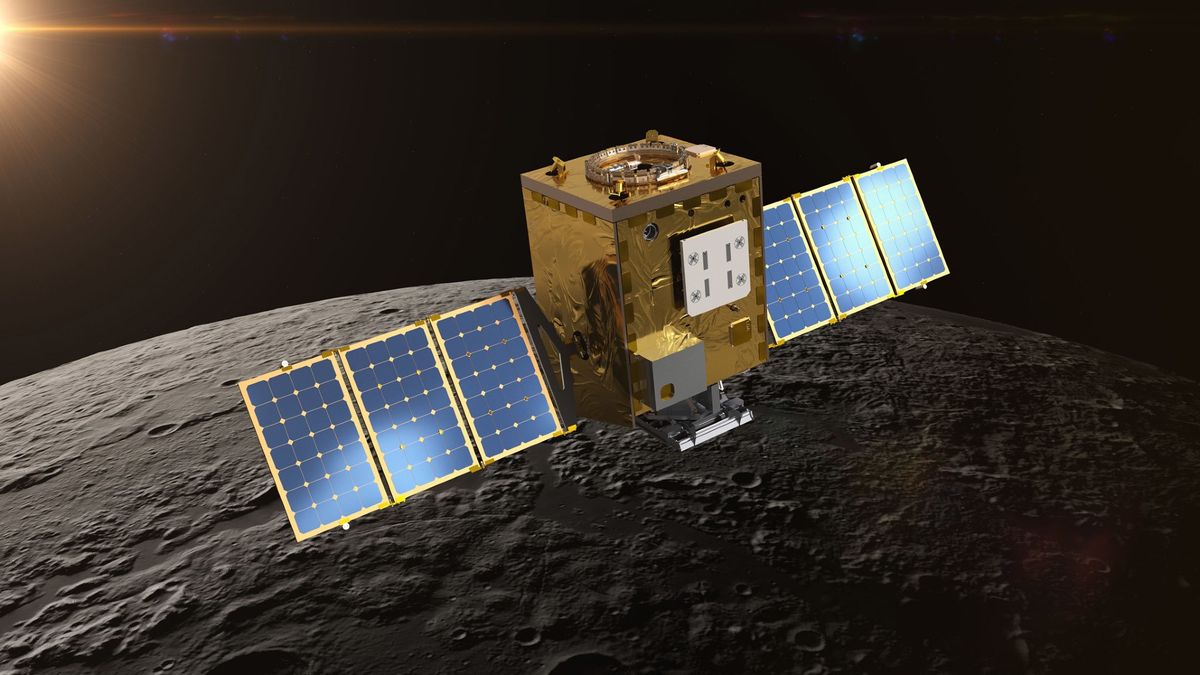NASA's Lunar Trailblazer satellite is ready to hunt for water on the moon
By Brett Tingley
published about 14 hours ago
Lunar Trailblazer joins a growing list of probes and landers heading toward the moon to search for water ice.

a cube-shaped satellite in orbit above the moon
A rendering of Lunar Trailblazer in orbit above the moon. (Image credit: Lockheed Martin)
NASA's Lunar Trailblazer mission is almost ready for liftoff.
The Lockheed Martin-built Lunar Trailblazer satellite is fairly small as satellites go, measuring just 11.5 feet (3.5 meters) wide and weighing around 440 pounds (220 kilograms). When it launches no earlier than 2024 on a yet-to-be-determined rideshare mission along with the Intuitive Machines IM-2 mission, it will hunt for water on the moon's surface and attempt to map its abundance and distribution.
The satellite recently received the second of its two instruments, the Lunar Thermal Mapper (LTM) sensor built by the University of Oxford in England. LTM is designed to use infrared light to map the surface temperature of the moon as well as mapping variations in the minerals that make up the lunar surface, according to a Jet Propulsion Laboratory (JPL) statement. Doing so will enable the satellite to identify lunar locations where water might be found.
"Designing, building, testing and now delivering LTM for its trip to the moon is a fantastic example of the innovative and dedicated teams at Oxford and across the U.K., especially given the challenges of the recent pandemic," University of Oxford physicist Neil Bowles said in the statement. "The data from the mission will help us to understand how water is transported across the surface and potentially captured in cold traps near the lunar poles, allowing follow-up from future human robotic exploration."
More:
https://www.space.com/nasa-lunar-trailblazer-hunt-water-on-moon
